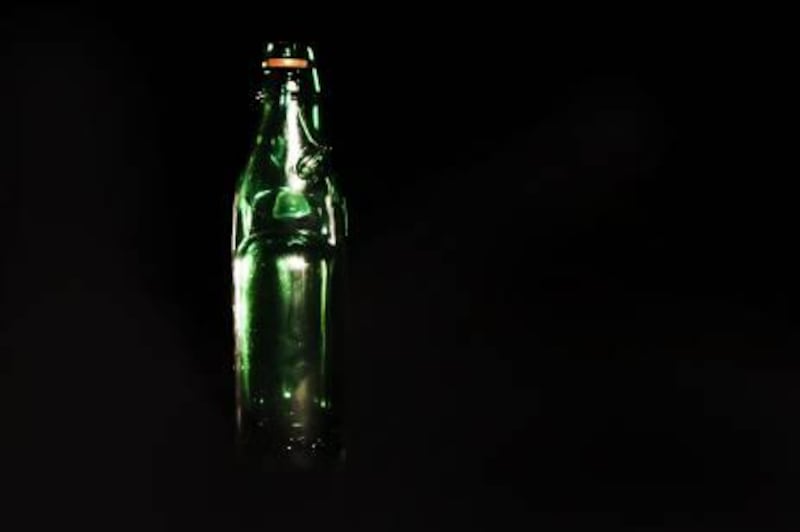For Khulood Al Ateyat, this green glass soda bottle or "namleet boteelah" evokes a cool and refreshing break on a hot summer's day.
Video:22.Codd neck soda bottle
This object tells the story of how British invention and Indian commercial enterprise combined to bring pleasurable relief from the heat of a Gulf summer.
--------------------------
She believes this very traditional bottle, stoppered with a marble rather a metal cap, arrived in the 1920s as very British lemonade. The name lemonade became corrupted to "namleet" in the local tongue; with the marble in the stopper called a "teela".
The drink, she says, "became very popular" with local traders devising way to keep the contents of the bottle cool even on the most scorching August day.
Bottles were placed in a bucket and lowered down a well. "When they wanted to consume it, they would pull up the rope and take out one of the drinks," she says.
Al Ateyat acquired this bottle about three years ago from a local collector who still likes to make his own lemonade and serve it in the original bottles.
Thousands, perhaps millions, have been produced over the years, but the single word "Victory" stamped near the base tells the story of this bottle.
Codd-neck bottles were invented in 1872 by one Hiram Codd of London. They were used all over the world, but were expensive to produce and had all but vanished from commercial use when Al Ateyat took her first sip.
The exception was in India, where the Khandelwar Glass Works acquired a licence to make the Codd-neck bottle in the region. They continue to produce two types to this day, the "deco" and the "victory", which is shown here.
This object, then, tells the story of how British invention and Indian commercial enterprise combined to bring pleasurable relief from the heat of a Gulf summer.
This object is the result of a collaboration with students from New York University's Al Hemyan project, which is dedicated to creating a digital archive by translating elements of cultural heritage into digital projects, public exhibits and art





